
Unboxing
It comes in a nice box with outstanding padding. Here are the photos and some initial comments.
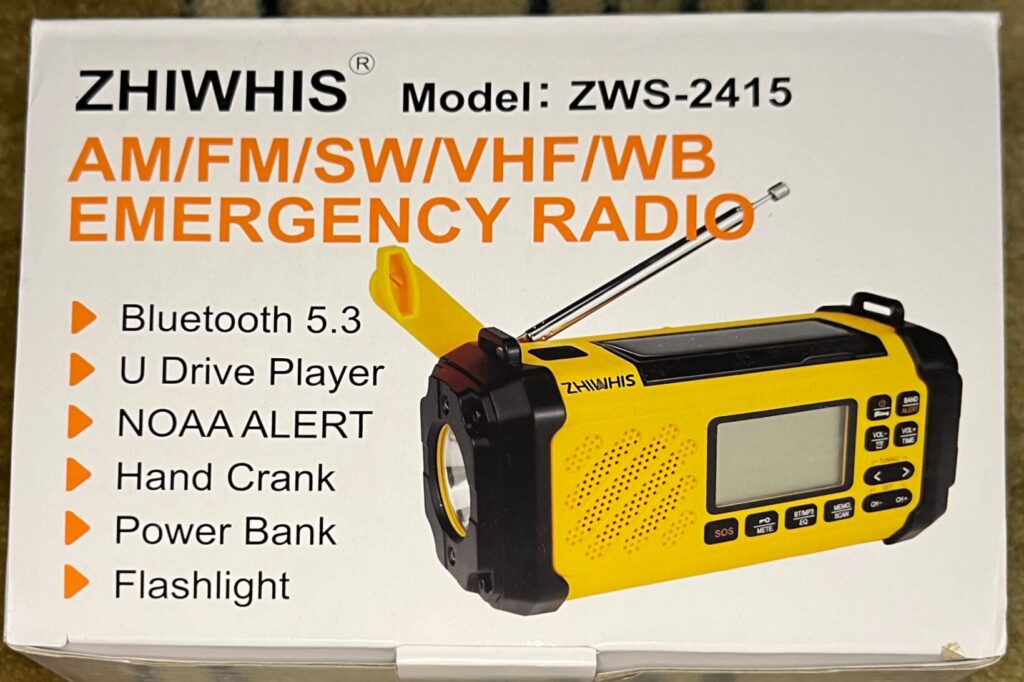
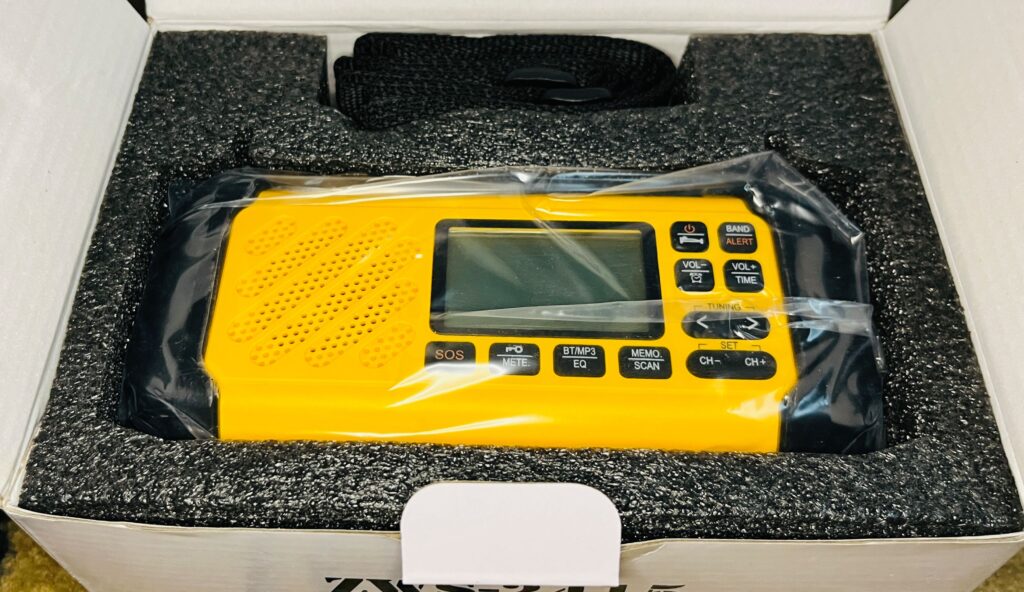
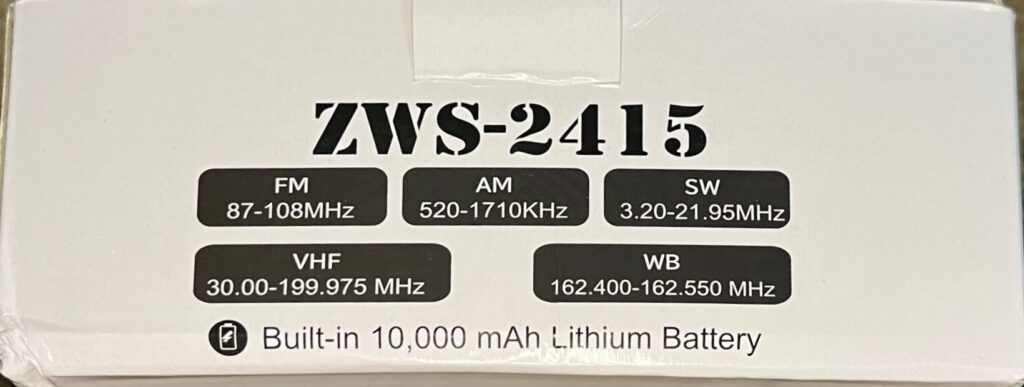
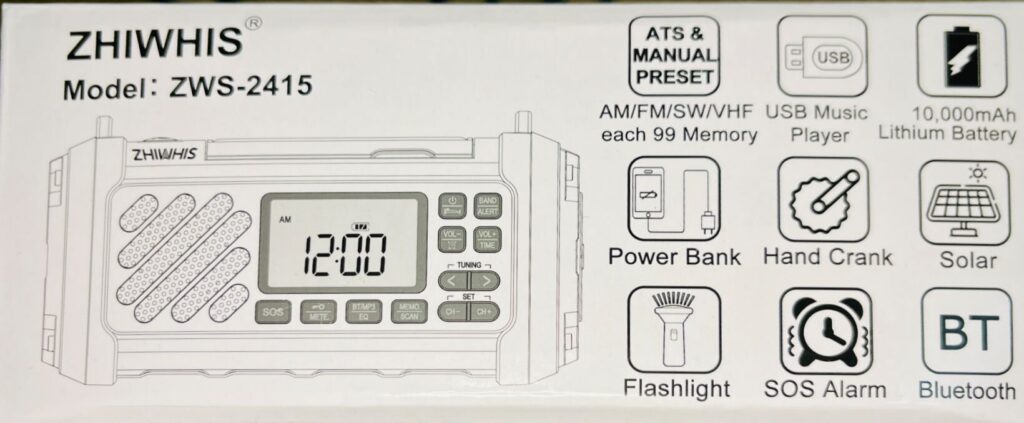
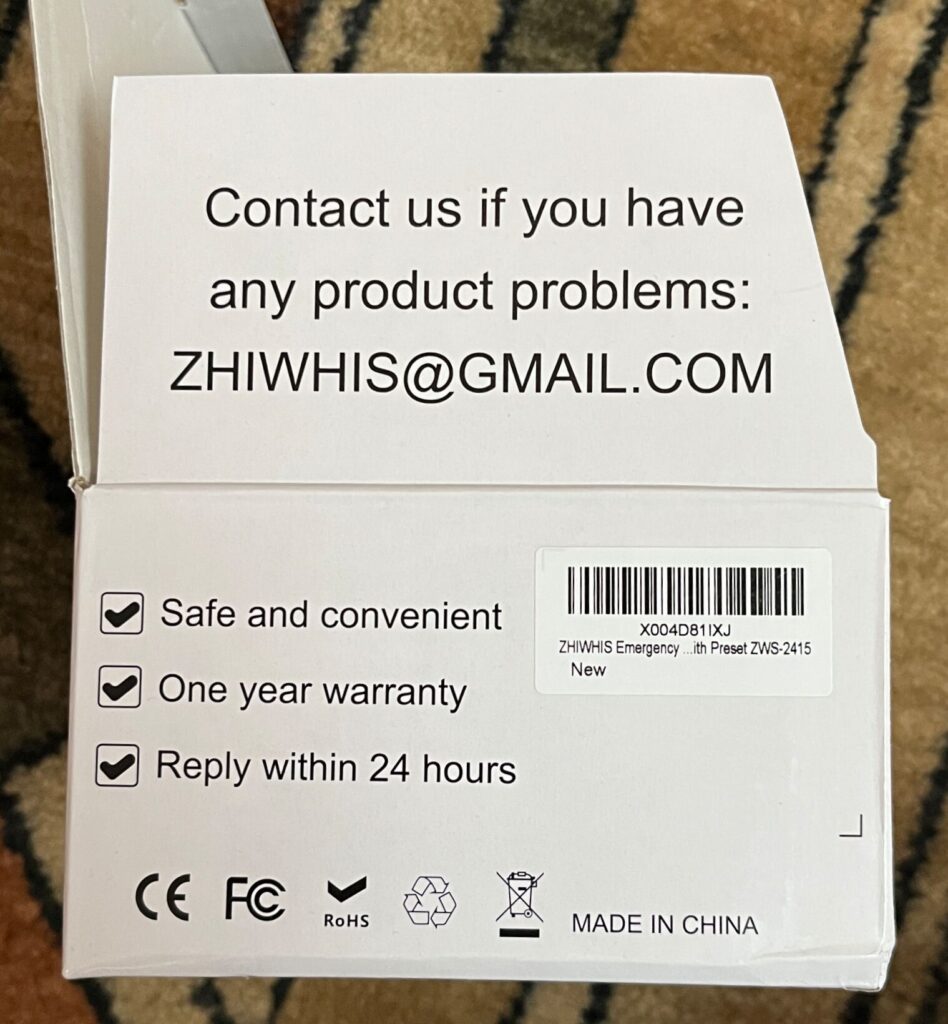

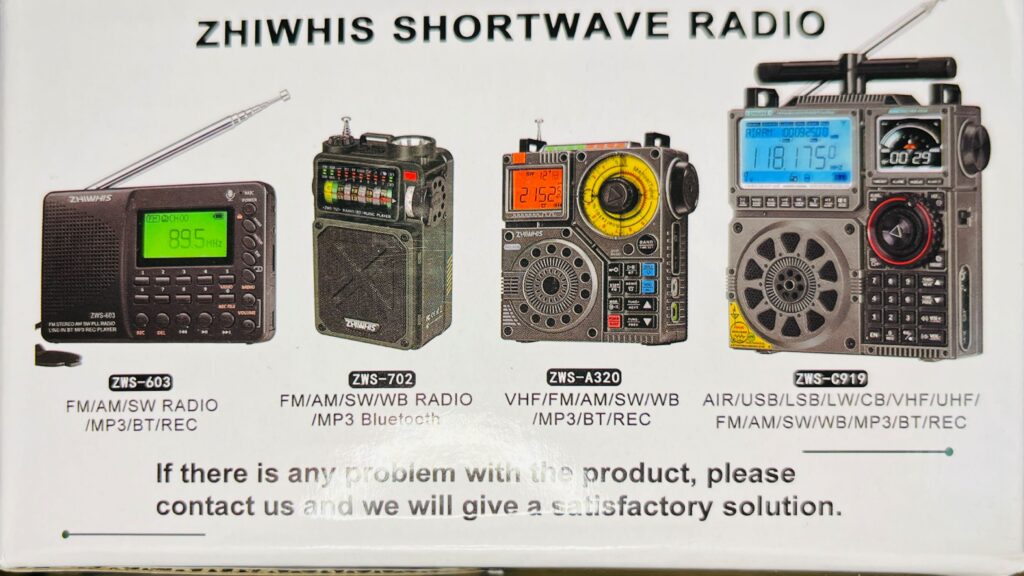
There is one strong impression I got from unboxing and that is a sense of brand. This is not a brand no one every heard of, but one with an array of products that they’re proud of, and that they intend to support. I have one other Zhiwhis radio, a ZWS-603.
The radio arrived with the battery > 75% charged.
First Impressions
First thing, I pulled out the telescopic antenna just to see its glorious 19 inches, unlike the miniscule antenna found on some other models. Next I switched to the FM band and tuned for some music. The volume can be set quite loud and the music was nice. I thought the sound had good presence and was pleasant to listen too. It doesn’t have strong bass, though. A HRD-757 or PL-990 both have notably better speakers and compared to them the ZWS-2415 is more obviously weak on the low frequencies. The radio sounds better indoors than outdoors.
I don’t know the precise relationship between HanRongDa, Raddy and Zhiwhis, but these labels appear on some identical products, and my familiarity with operating the Raddy RF75A and HanRongDa HRD-757 help me get started on this Zhiwhis ZWS-2415, especially the “clock mode.” Put simply, one tap of the power button illuminates the display and shows the clock. Pressing the power button a second turns the radio on. If the user does nothing, the radio will turn back off in about 10 seconds. A long press of the power button turns the radio off. Most of the settings are made starting in clock mode.
A comment about charging
I was expecting the radio to be chargeable via USB-C from a USB-C power distribution charger, but a PD charger (USB-C to USB-C) cable doesn’t recognize it. The supplied USB-A to USB-C cable works.
The radio comes with a solar panel on the top. It measures about 79 x 28 mm. That’s about .0022 square meters. If the cell is 20% efficient and the sun is fully irradiating at 1000W per square meter, then output of the cell should be approximately 0.4424 W. The radio battery has a capacity of 10000 mAh, presumably at 3.7V, or 37000 mWh, so it would take about 83.6 hours under full sun to fully charge the battery from the solar cell.
Performance on Broadcast Bands
I went outside about 1:30 PM local time for the Daytime Band Scans. I expected abysmal MW performance but it wasn’t as bad as I feared. I picked up 11 stations in my very low signal area. As one can see from the chart below, it bested quite a few other radios.
What I was not prepared for was FM. This radio equaled the best radios I’ve ever tested (Tecsun PL-880 and PL-990), receiving 80 stations!
While I was outside, I checked the local weather station, KZZ28, that I always hear on a weather radio. I’ve seen a couple of weather radios that half picked up a couple of other stations under optimal conditions. With this radio I picked up my local station plus three others at some level, the best ever seen by me and this was not out in the park where the ground is higher.
I quickly looked at shortwave I picked up a weak CFRX, 6070 kHz in Toronto which is a weak signal in the early afternoon. CHU from Ottawa on 7850 was there, along with a solid WWV on 15 MHz. There were some others I didn’t take time to identify, but probably France and Spain. More shortwave testing another day.
SOS
Rule 1: Learn how to shut off the SOS siren before testing.
A short press of the SOS button is supposed to turn it off, but if you long press some things when you shouldn’t, it doesn’t work the first time. Just remember when trying stuff, only a short press will work.
It also winks SOS in Morse Code.
The Manual
The manual is not perfect in its English translation, but it’s pretty good and not really a distraction. I didn’t go line by line comparing the PDF I found with the one that comes with the radio. They are similar. One place I found wanting was the section on Bluetooth.
Bluetooth
Bluetooth worked fine. I connected it to my Samsung Smart TV (noting that my old Zhiwhis ZWS-603) was still in the list. The problem arose when I wanted to stop Bluetooth. The manual says:
When disconnecting Bluetooth, you will hear “Bluetooth disconnected.
But there was not a word on how to exit Bluetooth mode. Long press the Bluetooth button? Turn the radio off and back on? Shut it down on the TV? None of that worked. I finally remembered something from another radio, I think perhaps the Raddy RF75A: press the BAND button. That takes you to radio and shuts down Bluetooth.
Could be Better
Every radio could be better somehow. My list is:
- Separate switch for the reading light. Now it automatically turns on when the solar panel is opened, making it impossible to position the panel to face the sun.
- Add an earphone jack, and hence stereo.
- Speaker could have better bass response.
- MW could be more sensitive.
- Add a thermometer (hey, it’s a weather radio that you might take camping).
- Make scans more sensitive. It skips audible stations.
- Have the clock visible when the radio is on.
Things to do:
Set the clock(see below)- Test VHF
Test SW with the supplied external antenna(done)- Check out memory scans and storage
Test Weather Alert (tests here are on Wednesdays between 11 AM and noon)NOAA weather alerts work.
Update
Setting the clock was pretty straightforward, at least for someone like me who has set a lot of clocks on a lot of radios. The key to all the settings on the radio is entering that no mans land between off and on called “Clock Mode.” A simple press of the power button when the radio is off gets there. Then press the aptly-labeled “TIME” button until the hours flash. Press the tuning arrows to change the hour, press TIME again to set the minutes. Press it a third time to set 12/24 hour and one last time to exit setting mode.
I had one question about weather alerts I couldn’t answer: how long will the radio run in alert mode on the battery. I sent a query to Zhiwhis customer service and they replied that the power consumption in alert mode is about 57 mA and that with the 10000 mAh battery fully charged, the radio should run for 170 hours, basically a week.
This isn’t a first impression, but a later one. I put some music files on a flash drive to test the MP3 capability, specifically some classical vocal music. The sound was very nice, clear and not at all muddy like some radios. I was so impressed I felt the need to come back and update this article.


 [robot emoji] symbol. Content comes most often from Microsoft Copilot, bit may also come from Perplexity, ChatGPT or Deep Seek.
[robot emoji] symbol. Content comes most often from Microsoft Copilot, bit may also come from Perplexity, ChatGPT or Deep Seek.
Another excellent review. Thank you for posting these reviews.
Tom Stiles